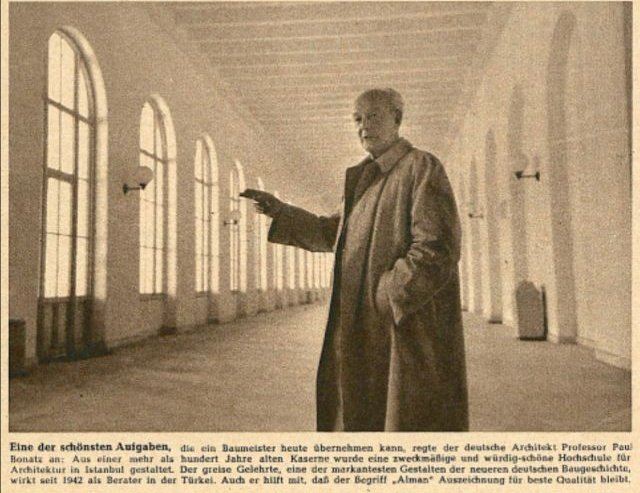He made great contributions to the development of architecture in Turkey: Who is Paul Bonatz?
Bonatz believed that in order to become nationally strong, each nation must embrace the force rooted in its origins, namely its own culture.

(1877-1956) German architect. It has been influential in the development of Turkish architecture in the regional-national direction, both with its buildings and educational studies. He was born on December 6, 1877, in Solgne bei Metz. Between 1896 and 1901, he completed his vocational training first in Berlin and then at the Technical University of Munich. He joined T Fischer (1862-1938) as an assistant at Stuttgart Technical University in 1902, and succeeded him in 1908. He came to Turkey because the project competition opened for the Turkish-German Friendship House to be built in Istanbul in 1916. He became a jury member in the Anıtkabir project competition in 1942. The following year, he once again came to Turkey to present the German Architecture Exhibition, which was circulated in many countries for propaganda purposes in those days.
Paul Bonatz (6 December 1877 – 20 December 1956) was a German architect, member of the Stuttgart School, and professor at the technical university in that city during part of World War II, and from 1954 until his death. He worked in many styles, but most often in a simplified neo-Romanesque, and designed important public buildings both in the Weimar Republic and under the Third Reich, including major bridges for the new autobahns. In 1943 he designed several buildings in Turkey, returning to Stuttgart in 1954.
At the end of the same year, he was appointed as a consultant architect at the Ministry of National Education. He attended education at Istanbul Technical University Faculty of Architecture between 1946-1954. In the meantime, he was a jury member of many competitions, the most important of which were Çanakkale Monument, Istanbul Radio House, and Istanbul Palace of Justice. The first U.I.A. (Union International des Architectes-International Union of Architects) attended the general assembly with the Turkish delegation. He left his post at the Faculty of Architecture in 1954 and returned to Germany, where he died in 1956.
Bonatz believed that in order to become nationally vital, each nation must embrace the force rooted in its origins, namely its own culture. Parallel to this, he wanted the use of local elements in architecture, and the buildings to be in a relationship with the region in which they are located. He himself has always tried to carry out his practices in Turkey in this direction. The Saraçoğlu Memur Evleri Mahallesi and the National Library in Ankara, where the main elements of traditional Turkish residential architecture are used in their design, are the best examples of such structures. In 1946, he was tasked with transforming the Ankara Exhibition House, one of the successful buildings of its period in contemporary understanding, into the State Opera. He continued the same architectural approach here.
